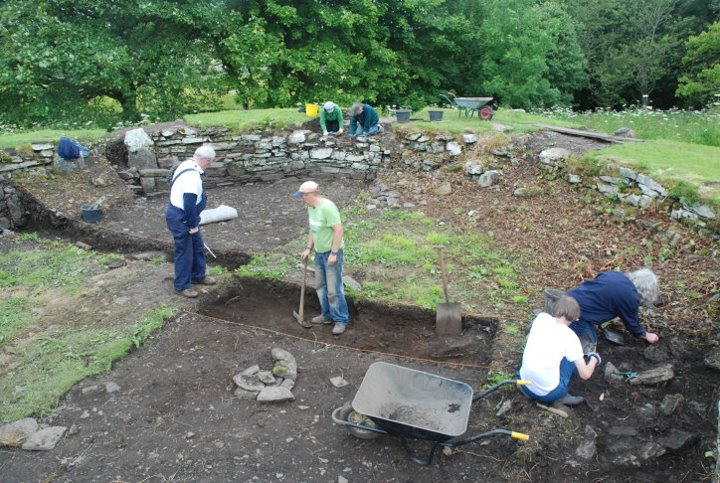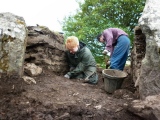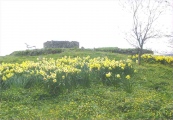<< Our Photo Pages >> Thrumster Mains - Broch or Nuraghe in Scotland in Caithness
Submitted by SolarMegalith on Thursday, 14 July 2011 Page Views: 9277
Iron Age and Later PrehistorySite Name: Thrumster MainsCountry: Scotland
NOTE: This site is 1.3 km away from the location you searched for.
County: Caithness Type: Broch or Nuraghe
Nearest Town: Wick
Map Ref: ND3319545059
Latitude: 58.388823N Longitude: 3.14431W
Condition:
| 5 | Perfect |
| 4 | Almost Perfect |
| 3 | Reasonable but with some damage |
| 2 | Ruined but still recognisable as an ancient site |
| 1 | Pretty much destroyed, possibly visible as crop marks |
| 0 | No data. |
| -1 | Completely destroyed |
| 5 | Superb |
| 4 | Good |
| 3 | Ordinary |
| 2 | Not Good |
| 1 | Awful |
| 0 | No data. |
| 5 | Can be driven to, probably with disabled access |
| 4 | Short walk on a footpath |
| 3 | Requiring a bit more of a walk |
| 2 | A long walk |
| 1 | In the middle of nowhere, a nightmare to find |
| 0 | No data. |
| 5 | co-ordinates taken by GPS or official recorded co-ordinates |
| 4 | co-ordinates scaled from a detailed map |
| 3 | co-ordinates scaled from a bad map |
| 2 | co-ordinates of the nearest village |
| 1 | co-ordinates of the nearest town |
| 0 | no data |
Internal Links:
External Links:
I have visited· I would like to visit
SolarMegalith visited on 5th Jul 2011 - their rating: Cond: 3 Amb: 3 Access: 4
Andy B have visited here
It is located on a prominent spur of land close to the nationally important archaeological landscape of Yarrows.
The Thrumster broch is one of many sites in Caithness to have been excavated in the 19th century, although no accurate or detailed records survive. The interior of the roundhouse was emptied of rubble over 200 years ago, and a summer house built in the area of the broch entrance.
Read More at ScotlandsPlaces.
Note: The threshold stone of the 2500 year old broch entrance is revealed as Portal contributor SolarMegalith and the other volunteers help to excavate Thrumster Broch. A post excavation presentation is planned for Sunday 24th July. View our pick of the best prehistoric events in this summer's Festival of British Archaeology below. Please send us some photos if you attend any.
You may be viewing yesterday's version of this page. To see the most up to date information please register for a free account.












Do not use the above information on other web sites or publications without permission of the contributor.
Click here to see more info for this site
Nearby sites
Key: Red: member's photo, Blue: 3rd party photo, Yellow: other image, Green: no photo - please go there and take one, Grey: site destroyed
Download sites to:
KML (Google Earth)
GPX (GPS waypoints)
CSV (Garmin/Navman)
CSV (Excel)
To unlock full downloads you need to sign up as a Contributory Member. Otherwise downloads are limited to 50 sites.
Turn off the page maps and other distractions
Nearby sites listing. In the following links * = Image available
704m ESE 117° Gansclet Standing Stone* Standing Stone (Menhir) (ND33824473)
774m SE 145° Gansclet Broch Broch or Nuraghe (ND3362744415)
1.0km NE 39° Thrumster Little Broch* Broch or Nuraghe (ND33844583)
1.6km S 191° Borrowston Broch* Broch or Nuraghe (ND3288143536)
1.8km SSW 208° Brounaban* Broch or Nuraghe (ND3231243478)
2.2km WSW 241° Battle Moss Stone Rows* Multiple Stone Rows / Avenue (ND3128644027)
2.2km WSW 245° Loch of Yarrows Crannog* Crannog (ND3114944161)
2.3km SW 222° McCole's Castle* Chambered Cairn (ND3161243364)
2.4km N 356° Cairnquoy* Broch or Nuraghe (ND33094743)
2.5km SW 218° Whiteleen Standing Stones* Standing Stones (ND3163743111)
2.5km SW 217° Whiteleen Cairn* Cairn (ND3165743081)
2.5km SW 226° Battle Moss Cairns* Cairn (ND31374333)
2.6km NNW 340° Tannach Mains* Broch or Nuraghe (ND32364748)
2.8km SW 235° South Yarrows Broch* Broch or Nuraghe (ND3083043492)
2.8km NE 41° Hempriggs Broch* Broch or Nuraghe (ND35114717)
2.9km SW 229° South Yarrows round house* Ancient Village or Settlement (ND30964320)
3.1km WSW 238° South Yarrows Chambered Cairn* Chambered Cairn (ND3049343462)
3.3km SW 234° South Yarrows Long Cairn* Chambered Cairn (ND3048343193)
3.4km SSW 205° Watenan East* Stone Row / Alignment (ND31724204)
3.4km S 187° Heatherquoy Broch or Nuraghe (ND3271341714)
3.4km SSW 212° Watenan West* Stone Row / Alignment (ND31324218)
3.4km ENE 59° Hempriggs Chambered Cairn* Chambered Cairn (ND36174680)
3.6km S 191° Ulbster School Broch or Nuraghe (ND3243141497)
3.8km SW 222° Warehouse North* Chambered Cairn (ND3056742276)
3.9km SSW 200° Watenan North Broch Broch or Nuraghe (ND3180441456)
View more nearby sites and additional images



 We would like to know more about this location. Please feel free to add a brief description and any relevant information in your own language.
We would like to know more about this location. Please feel free to add a brief description and any relevant information in your own language. Wir möchten mehr über diese Stätte erfahren. Bitte zögern Sie nicht, eine kurze Beschreibung und relevante Informationen in Deutsch hinzuzufügen.
Wir möchten mehr über diese Stätte erfahren. Bitte zögern Sie nicht, eine kurze Beschreibung und relevante Informationen in Deutsch hinzuzufügen. Nous aimerions en savoir encore un peu sur les lieux. S'il vous plaît n'hesitez pas à ajouter une courte description et tous les renseignements pertinents dans votre propre langue.
Nous aimerions en savoir encore un peu sur les lieux. S'il vous plaît n'hesitez pas à ajouter une courte description et tous les renseignements pertinents dans votre propre langue. Quisieramos informarnos un poco más de las lugares. No dude en añadir una breve descripción y otros datos relevantes en su propio idioma.
Quisieramos informarnos un poco más de las lugares. No dude en añadir una breve descripción y otros datos relevantes en su propio idioma.